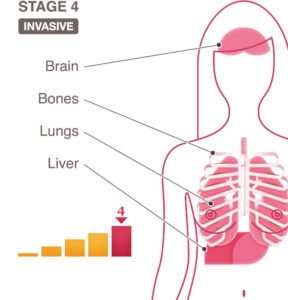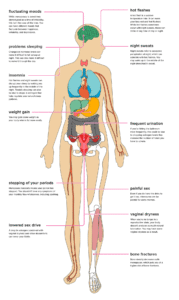Physical Therapy Exercises for Drop Foot
Physical Therapy Exercises to Manage Foot Drop
Foot drop, a condition that makes lifting the front part of the foot challenging, can significantly impact mobility. Physical therapy exercises target specific muscle groups in the lower leg and back to improve strength, balance, and coordination. These exercises aim to enhance functional mobility, promote safer walking, and reduce the risk of falls. This article explores the causes of foot drop, how it’s assessed, and effective physical therapy exercises to support recovery.
Understanding Foot Drop and Its Causes
Foot drop occurs when the anterior tibialis muscle, located in the front of the shin, is weakened or impaired, making it difficult to lift the toes while walking. This often results in a distinctive gait where the toes drag or catch on the ground. The condition can stem from various underlying issues affecting the brain, spinal cord, or peripheral nerves.
Common Causes of Foot Drop
Several conditions may lead to foot drop, including:
- Stroke: Disrupts nerve signals, causing muscle weakness.
- Spinal Cord or Neck Injuries: Damage to the spinal cord can impair nerve function.
- Sciatica: Compression of the sciatic nerve may weaken leg muscles.
- Peroneal Nerve Injury: Trauma to the lower leg nerve can cause foot drop.
- Multiple Sclerosis: Affects nerve communication, leading to muscle dysfunction.
- Transverse Myelitis: Inflammation of the spinal cord can disrupt nerve signals.
Initial Physical Therapy Assessment for Foot Drop
During your first physical therapy session, a therapist will conduct a thorough evaluation to understand your condition and its impact on daily life. This assessment helps tailor a treatment plan to your specific needs.
Key Evaluation Components
The therapist may assess:
- Range of Motion (ROM): Measuring flexibility in the foot and ankle.
- Muscle Strength: Evaluating the strength of lower extremity muscles.
- Functional Mobility: Observing how foot drop affects walking and movement.
- Balance and Proprioception: Testing body awareness and stability.
- Impact on Daily Life: Discussing how the condition influences routine activities.
Effective Physical Therapy Exercises for Foot Drop
Physical therapy for foot drop focuses on strengthening weakened muscles, improving flexibility, and enhancing balance. A therapist will design a personalized exercise program based on your condition and progress.
Targeted Exercises for Foot Drop
Here are some common exercises prescribed for foot drop:
- Anterior Tibialis Strengthening: Exercises like toe raises or resisted dorsiflexion strengthen the muscle responsible for lifting the foot.
- Ankle Mobility Drills: Gentle ankle circles or stretches improve flexibility and range of motion.
- Calf Stretching: Stretching the calf muscles prevents tightness, which can worsen with foot drop.
- Lower Back Exercises: If sciatica contributes to foot drop, core and back strengthening can relieve nerve compression.
- Balance Training: Activities like standing on one leg or using a balance board enhance stability and proprioception.
Tools to Support Rehabilitation
Therapists may incorporate tools to aid recovery, such as:
- BAPS Board: A balance board to improve ankle stability and coordination.
- Resistance Bands: Used to strengthen the anterior tibialis through controlled movements.
Complementary Treatment Modalities
In addition to exercises, physical therapists may use supportive techniques to improve foot function and gait.
Assistive Devices and Techniques
- Ankle-Foot Orthosis (AFO): A brace that stabilizes the ankle and foot, promoting a natural gait. AFOs are often custom-made from materials like plastic or carbon fiber for comfort and durability.
- Elastic Band Support: A temporary band that pulls the foot upward during walking to normalize gait during early rehabilitation.
- Neuromuscular Electrical Stimulation (NMES): This technique uses electrical impulses to stimulate muscle contractions, retraining the anterior tibialis to function properly.
Progress and Patience in Foot Drop Recovery
Recovery from foot drop can be gradual, requiring consistent effort and adherence to the therapy plan. Regular assessments by your physical therapist will track improvements in strength, mobility, and balance. Staying committed to the prescribed exercises and modalities is crucial for long-term success.
Tips for Staying Motivated
- Set small, achievable goals to celebrate progress.
- Communicate openly with your therapist about challenges or discomfort.
- Incorporate exercises into your daily routine for consist
💡 Frequently Asked Questions
Verywell / Gary Ferster What Triggers Foot Lose?
Answer coming soon. We are working on detailed responses to this common question.
⭐ Expert Tips
- Include seasonal or trendy variations to keep your meals exciting.
- Highlight prep shortcuts or time-saving techniques for busy cooks.
- Consider dietary restrictions and include substitution suggestions.
✅ Key Takeaways
- These dinner ideas are perfect for impressing guests or enjoying special occasions.
- Choose recipes that match your skill level and available kitchen tools.
- Presentation and taste both contribute to a memorable dining experience.
📣 Join Our Community
Want more inspiration like this? Subscribe to our newsletter for weekly dinner ideas and cooking tips!








